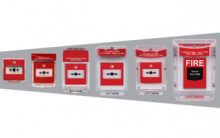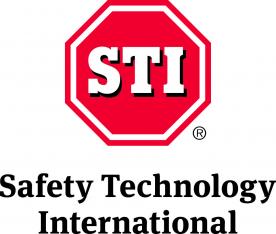Another False Alarm?
Another False Alarm?
Costing the UK an estimated £1 billion a year, false fire alarms remain a huge problem in 2018; disrupting schools and businesses, placing unnecessary strain on our emergency services and reducing the confidence the general public have in fire alarms.
Firefighters response to all alarms as if they are real, as a result in London alone a fire engine is called to a false alarm every 12 minutes, but now the BSI is recommending protective covers for all manual call points, will we see a decline in malicious activations?
In the recent revision to the BS5839-1:2017 the British Standard Institute has recommended, in section 20.2 b) of the update, that: “All MCPs should be fitted with a protective cover, which is moved to gain access to the frangible elements.”
The changes come after the Fire Industry Association’s Fire Detection & Alarm Council presented their own recommendations for changes to BS5839-1:2017 to the BSI. This follows a research project in combination with the BRE that found a shocking 44% of Fire and Rescue callout turn out to be false alarms.
The project titled ‘Live investigations of false fire alarms’ discovered that one of the main causes behind this high number of false alarms was accidental activations. In environments such as hospitals, factories and shopping centres this was caused by trollies striking the call point with enough force to activate the alarm.
In other instances the BRE found that false alarms arose from individuals confusing the call point with an electronically locked door release. Malicious activation was also noted as a cause of false alarms.
Safety Technology International’s Managing Director, Steve Hunt believes that the update to the British Standard will aid the decline in false fire alarms throughout the country.
He said: “The update to the British Standard strongly reinforces the work Safety Technology have been doing for over three decades. Our protective covers are designed to prevent false fire alarms and they are effective at doing so.”
All manual call points that are placed in vulnerable areas and are prone to false activations should now be protected, without the need to consult your fire safety officers.
STI supply a range of protective covers, from integral covers to sounder models; there are variations to suit all applications. These covers are specifically designed to prevent false alarms whether accidental or malicious.
The Call Point Stopper is a protective cover ideal for areas with a risk of accidental activation. The clear UV-stabilised polycarbonate cover does not restrict legitimate operation of vulnerable call points – helping to distinguish the difference between a manual call point and a green electronic door release.
However, if there is a history or threat of malicious activation whereby school pupils are willing to lift a protective cover in order to raise a false alarm and disrupt lesson time, the Euro Stopper offers a solution. The Euro Stopper is a protective cover that helps prevent both malicious and accidental activations.
The tamper-proof cover features the same sturdy UV-stabilised polycarbonate housing as the Call Point Stopper but has the useful addition of an integral sounder. The 96dB sounder emits a piercing alarm when the cover is lifted drawing immediate attention to the area. This acts both as a deterrent for those looking to raise a false alarm maliciously, as well as functioning as an additional alarm in an emergency situation.
If further protection is still required the Universal Stopper provides IP56 protection from the elements with a tough outer dome that is strong enough to withstand the severest of knocks from wayward sports equipment or large trollies. A 96dB sounder defends against malicious activation.
Conforming up to IP66, the Enviro Stopper offers the same UV-stabilised polycarbonate protection and piercing alarm, whilst guarding against dust, dirt and grime in harsh environments.
Contact sales on +44 (0)1527 520 999, email sales@sti-emea.com or visit www.sti-emea.com, for further information on the range of protective covers from STI.


